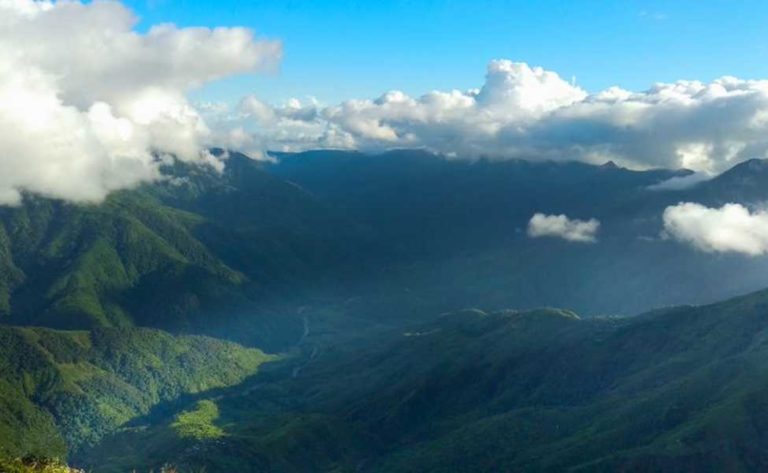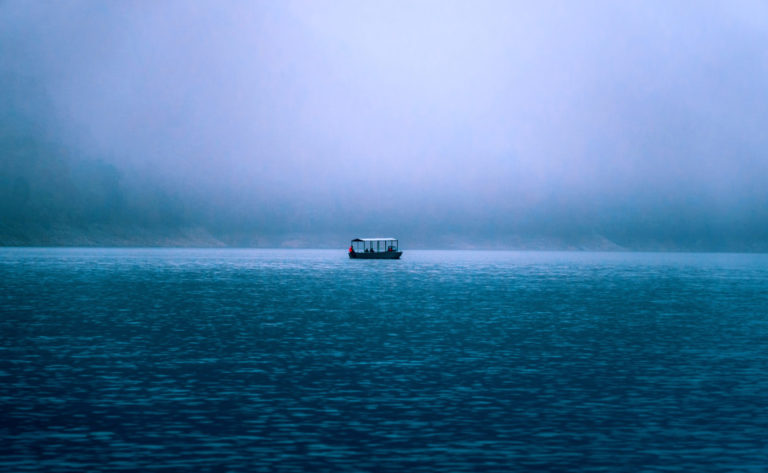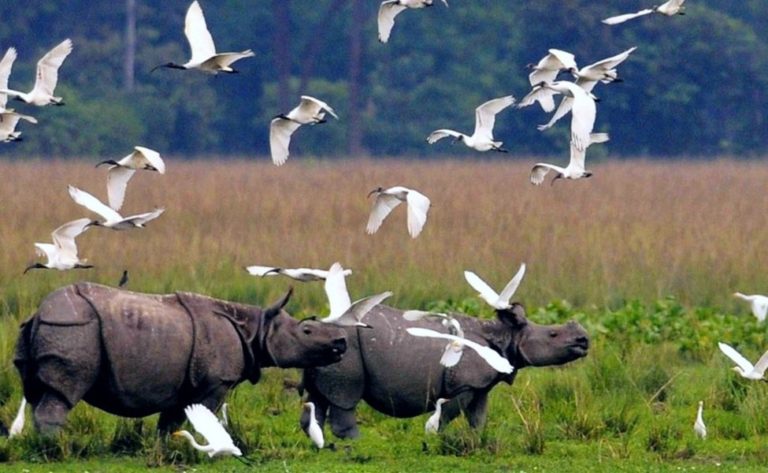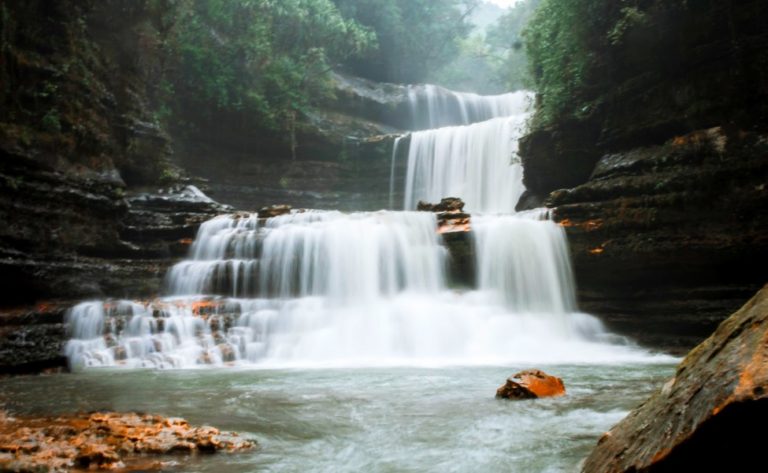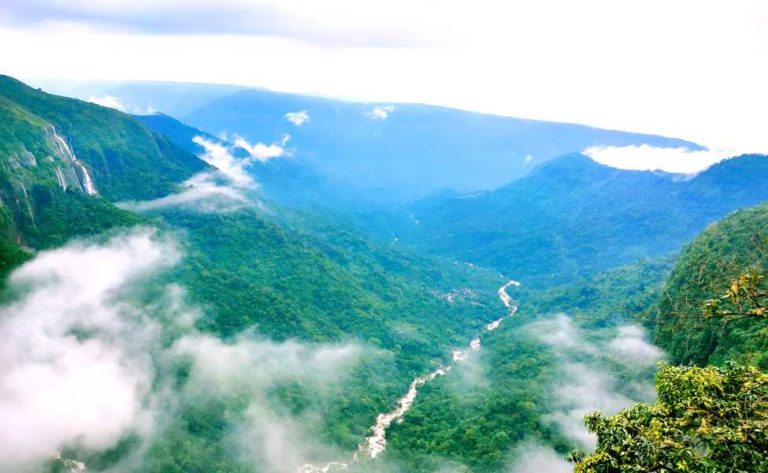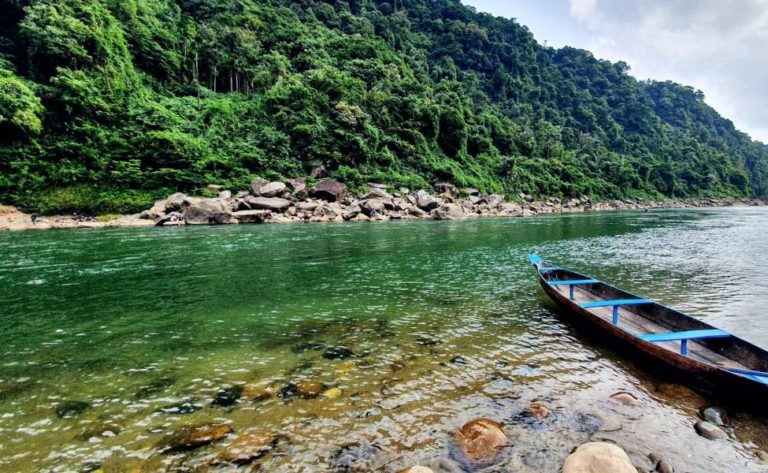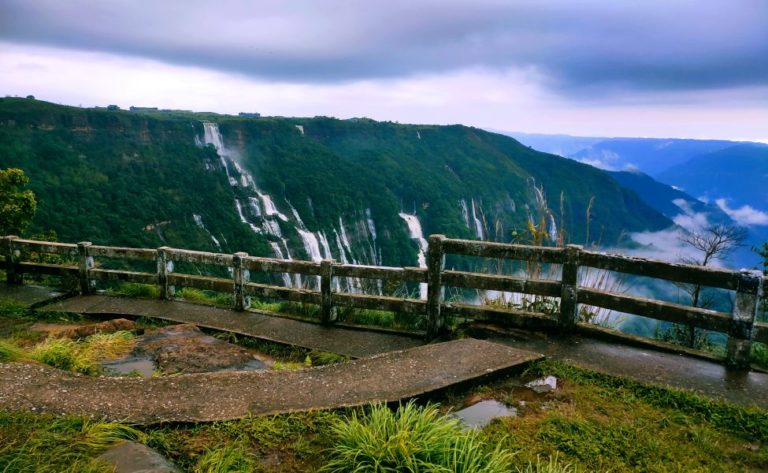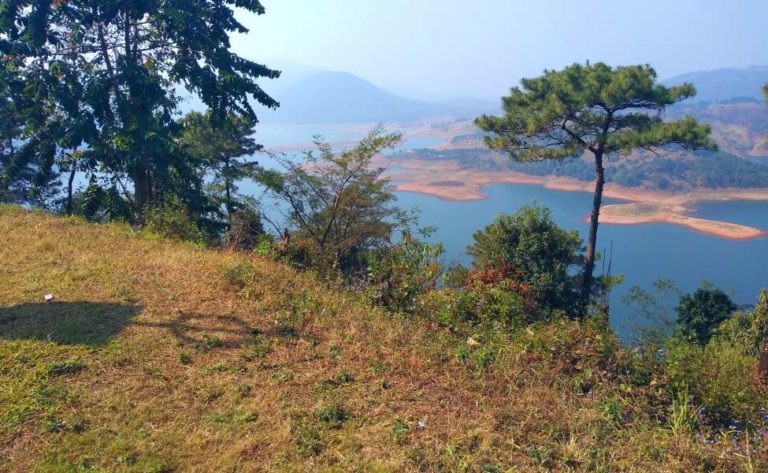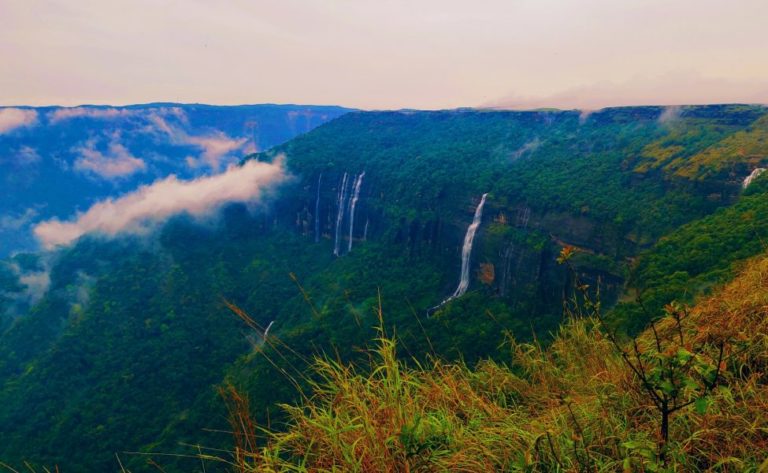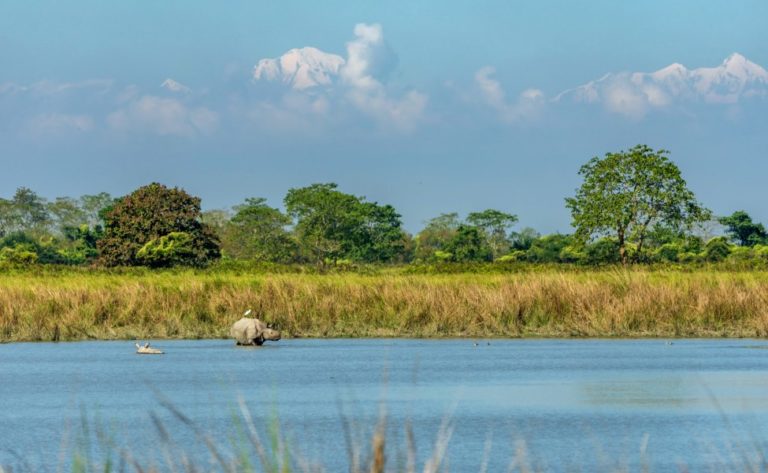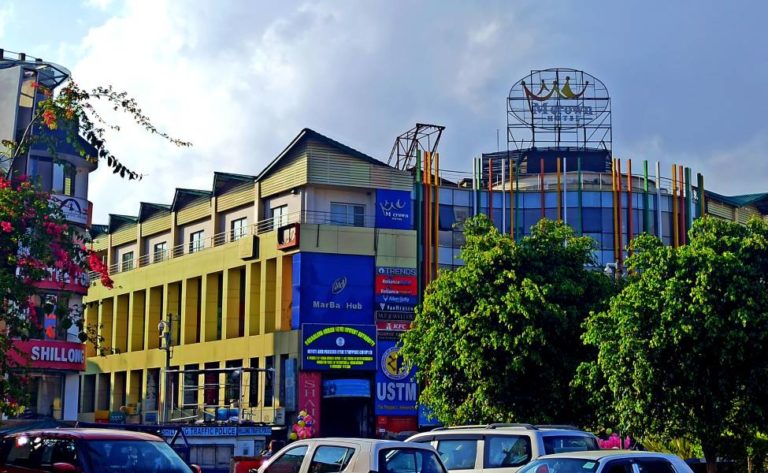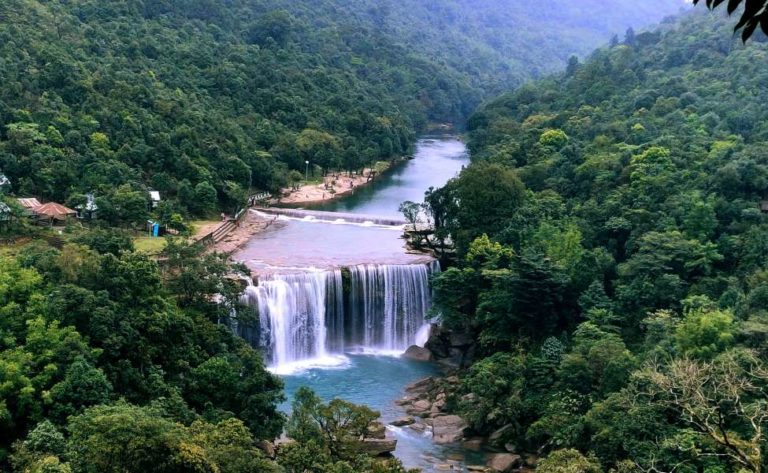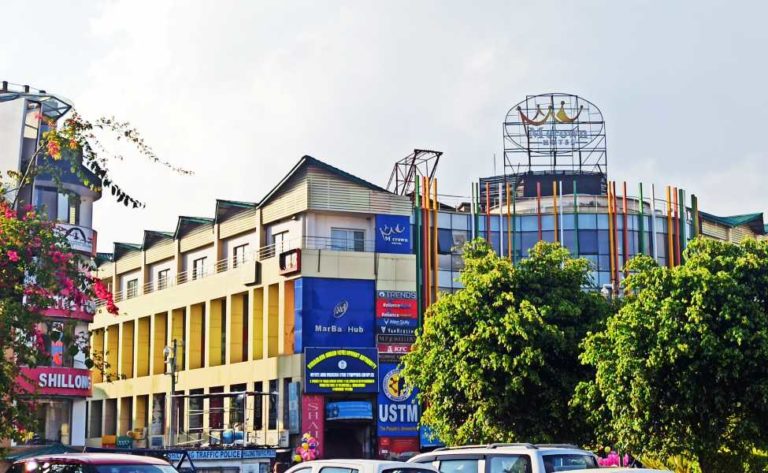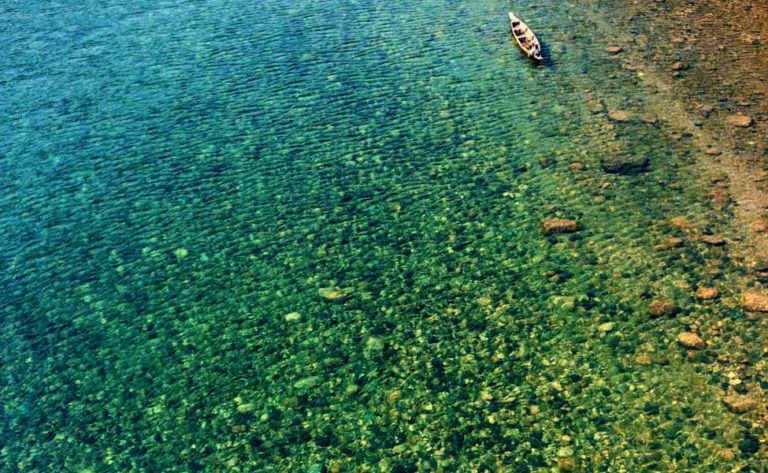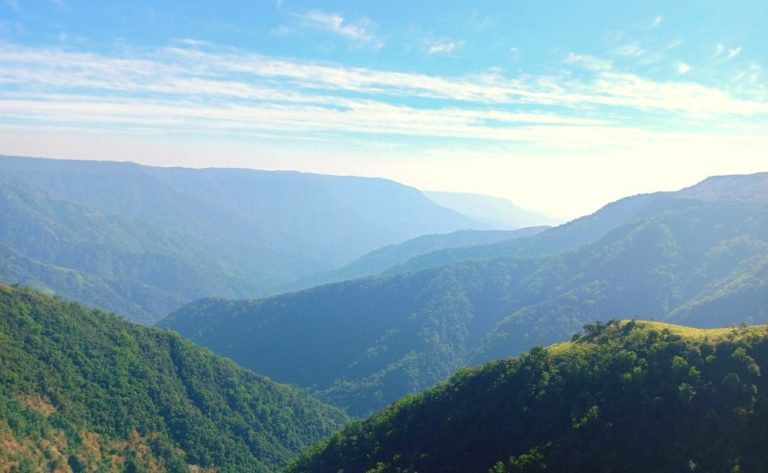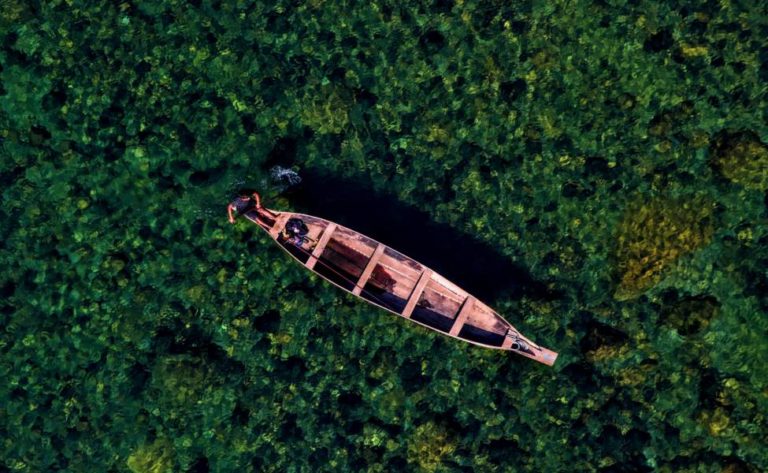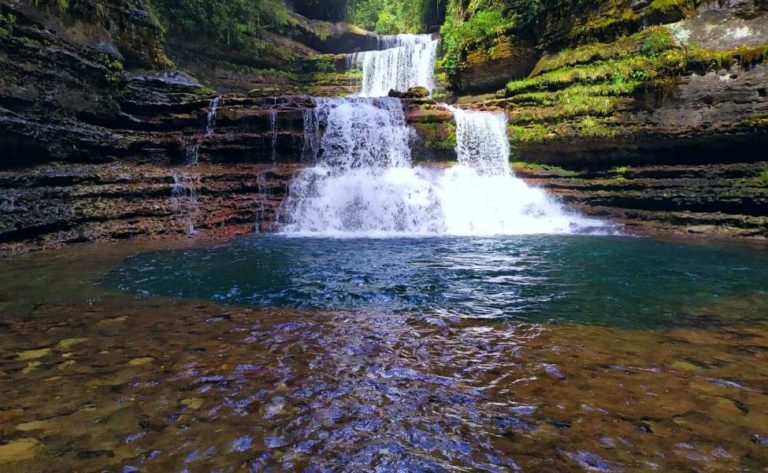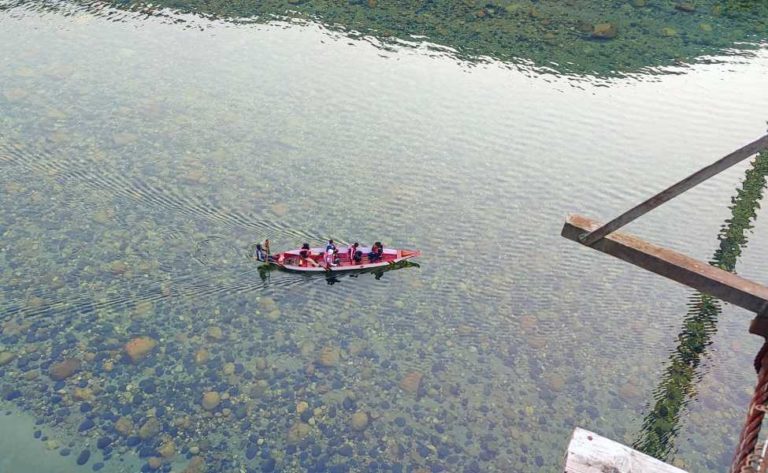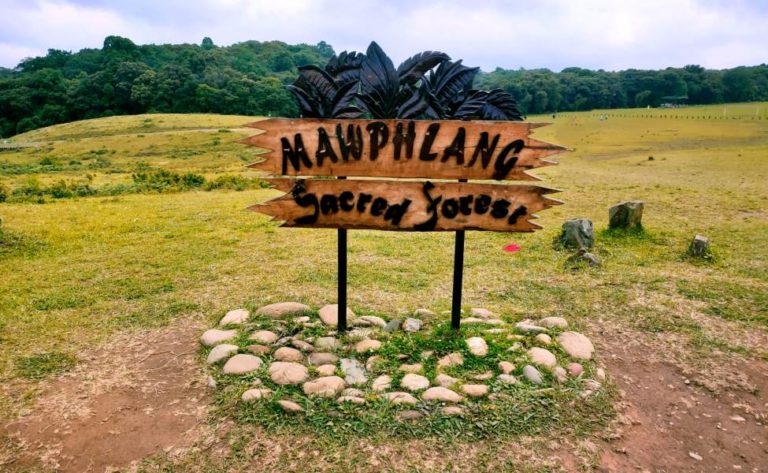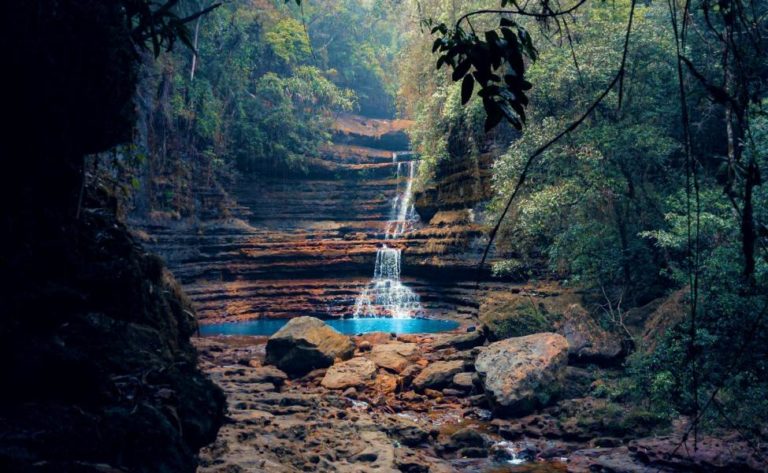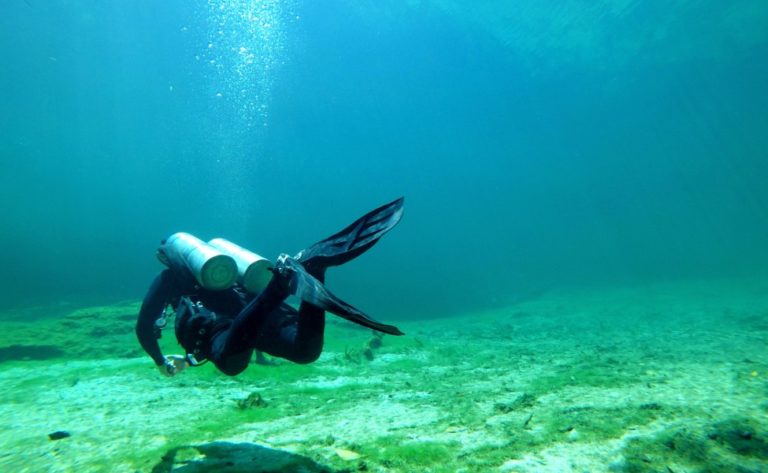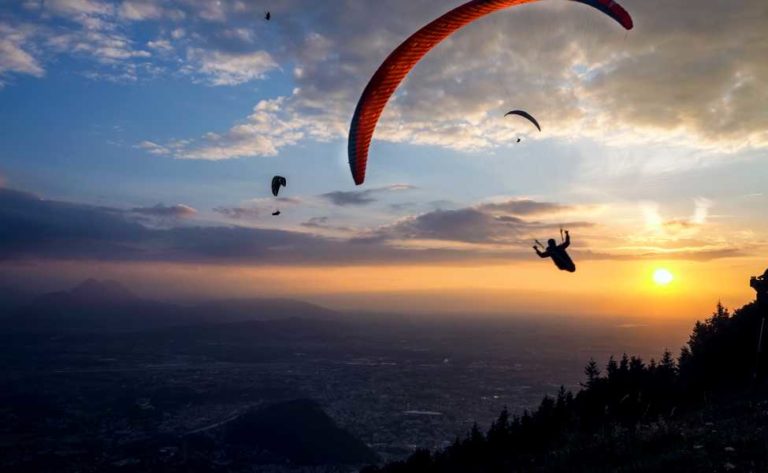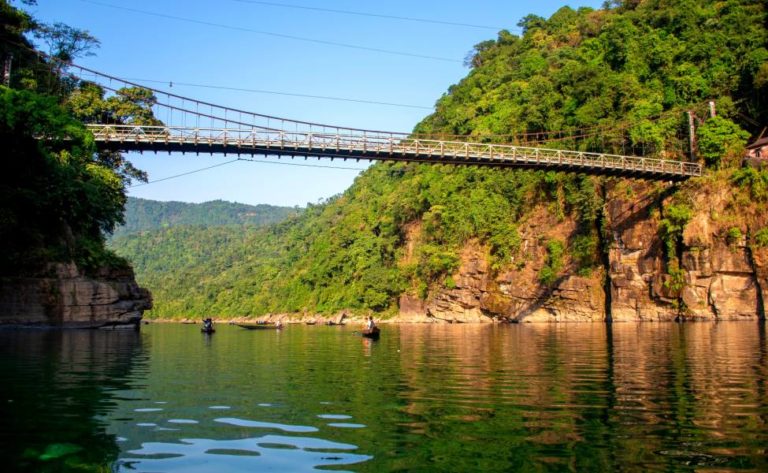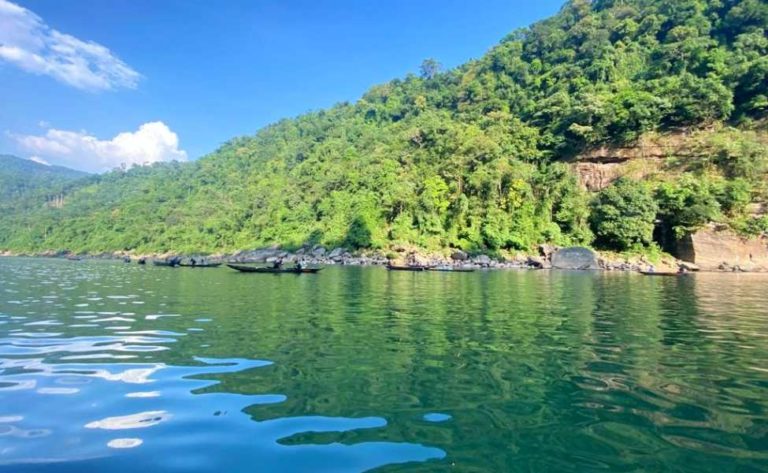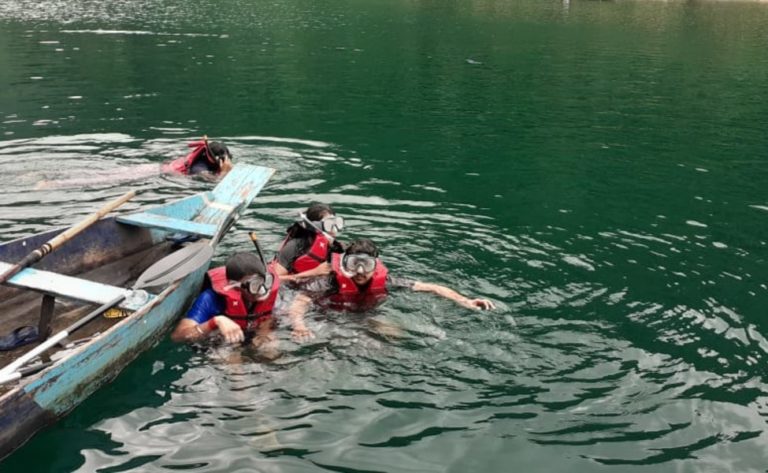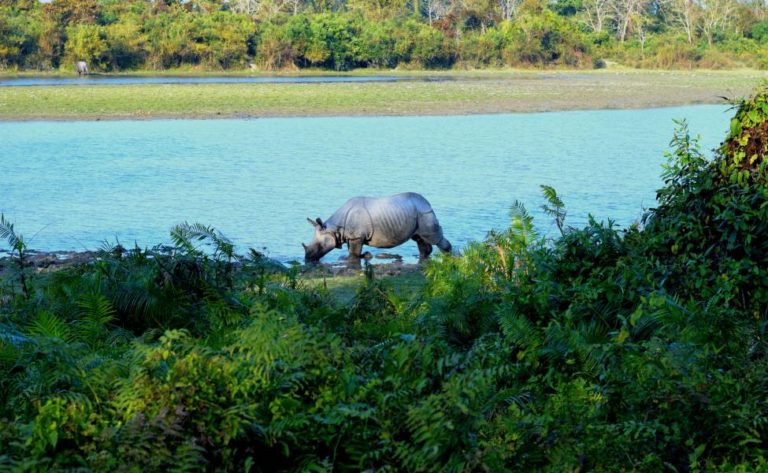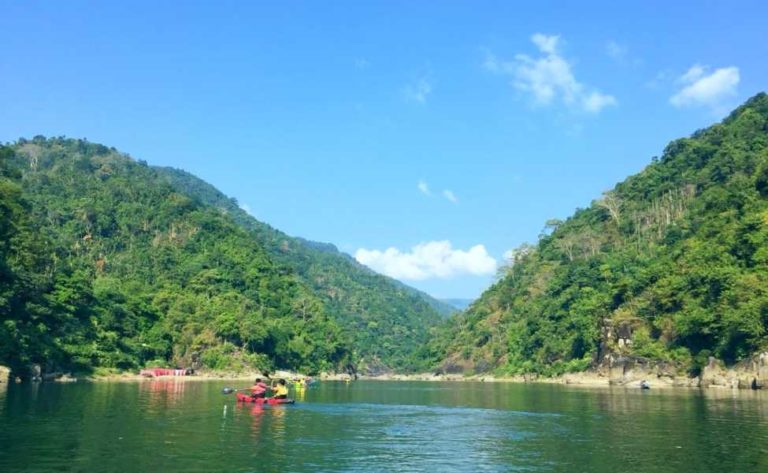
Places to visit in Meghalaya
Places to visit in Meghalaya
Meghalaya, which means “abode of clouds,” is an ideal place for individuals who appreciate being outside. This absolutely stunning and entrancing state has grabbed the attention of tourists from all over the world. It is situated in the northeastern region of India. Bangladesh and Assam are its neighbours to the south and west, respectively. Meghalaya is a state with an abundance of natural wonders, including vast hills, valleys, innumerable lakes, stunning waterfalls, deep caverns, and sacred forests. Views in all directions, misty hills, terraced slopes, flowing waterfalls, and serpentine rivers will all charm your soul. Your senses will be awakened by Meghalaya. The adventurous traveller is in for a lot of amazing experiences, from heart-pounding activities to cultural treasures.
The cultural fabric of Meghalaya is made up of many different threads. The state’s largest traditional festivals are fantastic venues for experiencing the distinctiveness of the indigenous community. While learning about the meaning behind each festival, take in the stunning vistas and local customs.The timing of your departure for your chosen vacation destination is greatly influenced by the weather. You can choose the most advantageous time to go after assessing the benefits and drawbacks of each season. There won’t be a dull moment in Meghalaya during your stay if you schedule it between April and June. Also because of the pleasant weather, this is the best time to go sightseeing and engage in adventurous activities.
Discover some of the state’s local history while enjoying some of its many culinary offerings. Take advantage of the burgeoning nightlife by getting lost in the local markets. Meghalaya has a reputation for hosting cutting-edge cultural events that celebrate both domestic and foreign artistic talent. Shillong, Tura, Jowai, Cherrapunjee, Nongpoh, and Baghmara are among the well-known tourist destinations in Meghalaya. Wards Lake, Green Rock Ranch, the Butterfly Museum, Lady Hydari Park, Mawsmai Cave, Sweet Falls, Khoh Ramhah, and Nohkalikai Falls are just a few of the tourist destinations in Meghalaya that are well worth a visit. To allow Meghalaya to assist you in discovering who you are, you only need to take the first step. Action-packed adventures await, including some of the most difficult tunnels and cascades in the world to explore along with stunning climbs and hikes. You will be happy with your collection of priceless memories and the exquisite handiwork produced by the people of this state when it comes to bringing something back. The state is extraordinarily beautiful, lush, and vibrant, so everyone can have a great time there.
Travel Guides
Places to visit in Meghalaya
Here is a list of all the exciting and worth visiting places to explore if ever in Meghalaya.
Laitlum Canyons

Wide, sweeping, and gorgeous views of the state of Meghalaya can be had in no better location than Laitlum Canyons. Literally translated as “end of the world” or “end of the hills,” Laitlum Canyons is a region. The distance to Shillong is roughly 45 kilometres. Because of the region’s extensive, rugged, and lush green hikes, trekkers, adventure lovers, and thrill seekers can have a great time. The views are no doubt finest from the terrain, despite its slight strain. The only access point between the town and the closest market is a lengthy stairway on the mountainside that has around 3,000 steps. Because of the morning fog, which makes it difficult to enjoy the view, the ideal time to visit is in the afternoon. The magnificent Laitlum hill inclines are often referred to as Meghalaya’s Amphitheatre. The slopes are drawn in a huge types of , from peddle dark to exquisite pink and bright reddish tinge at dawn and dusk. A sputtering brook is also present at the gully’s foot, running through a lush glade. Laitlum Canyon is the perfect location for some leisurely peak glare, with a smooth, flat summit facing a quiet valley where you may lie down for a while and enjoy the lovely floating clouds. If you’re looking for a place to get away to so that you may “refresh and restart,” then travelling to the northeast of India might be among your finest options. This region of India is a true paradise that is tucked away in every eastern region of the country.
Double Decker Root Bridge

There is no other bridge like the Double Decker Root Bridge in the world.
The beautiful thing about this live bridge is that it has ever-expanding roots, hence the name “living root bridge.” They become brawny with time and can support the weight of about forty people in a go! The genuine root bridges are located in Nongriat, a tiny settlement in the East Khasi Hills. Due to its location deep within the hills’ jungle, you cannot take a taxi directly to this village. Therefore, you must travel to Tyrna Village, which is where the climb starts. This is only a 20–30 minute drive from Cherrapunjee and is easily accessible from there.
Begin your walk, as early as you can for a timely and good start. Start at nine in the morning, and one can only return before sunset. In the height of winter, darkness falls at about 4 o’clock. Your entire day will be spent on this magnificent hike. To get to the Double Decker root bridge, there are an additional 3,000 stairs on either side.
Krang Suri Falls

In the state of Meghalaya, Krang Suri is among the most well-known, stunning, and unusual waterfalls. One of northeast India’s most well-liked and unusual tourist destinations, Meghalaya is home to one of the state’s top five waterfalls. One of these well-known waterfalls may be found in the West Jaintia Hills district, around 30 kilometres from Jowai. The mountains that house the famous Krang Suri waterfall are visible from a distance. The path leading up to the waterfall is extremely narrow and treacherous because it runs along the edge of the mountains. One of the best shooting locations in Meghalaya is the Krang Suri waterfall, which has appeared in a number of Bollywood films throughout the years. What shocks everyone is the colour of the plunge pool. It is the most exquisite deep copper sulphate blue. Late summer is the ideal time to visit Krang Suri because the rainy season can make the road to the waterfall quite hazardous and slick. There aren’t many tourists visiting this undiscovered but ideal eccentric location.
The waterfalls in Krang Suri are truly stunning!
Mawlynnong Village

The moniker “God’s Own Garden” is more fitting for Mawlynnong than its status as one of Asia’s cleanest towns. A picture-perfect backdrop is created on the border of Meghalaya’s southern hills by the fruit orchards, rushing streams, lush surrounds, swinging palms, and the well-preserved Khasi customs. The year-round climate in Mawlynnong is pleasant. The monsoon season is still the ideal time to travel there. Rains reveal this village’s genuine personality and the lush greenery that surrounds it, creating a stunning scene. In the Mawlynnong community, cleanliness is a way of life rather than merely a value. Since 2007, there are working toilets in every home in this community, and bamboo dustbins are available for use by everyone. Every waste item, even dry leaves, is disposed of in the trash can. Smoking and using plastic bags are absolutely forbidden in this area. The penalties for breaking these guidelines are severe. Mawlynnong also produces its own manure from the collected trash. Along with maintaining their own tidy quarters, people also clean the roadways and plant trees
Garden of Caves

During the British colonisation of India, the Garden of Caves was constructed. The Khasi people of Meghalaya used to hide in the caves during the time of British rule to avoid invasion(ARREST) by the British forces. The surrounding dense forest used to be a source of food and other essentials, and these caves used to offer them protection from the rain. Because of its natural beauty and the way that the forest has been preserving the area for so long, the Garden of Caves is regarded as a paradise on earth(IS A BEAUTIFUL AND NATURAL PLACE). Only a small number of people are visible at the attraction site due to the caverns’ remote location and difficulty in accessing the cave.Compared to other popular tourist destinations like Cherrapunjee’s Root Bridge, where the majority of the population congregates, these caverns are less crowded. It’s the few of the best locations for taking time away from the urban hustle and bustle.
Mawphlang Sacred Forest

Shillong, the state capital of the north-eastern Indian state of Meghalaya, is 25 kilometres distant from Mawphlang, the location of the Sacred Forest of Meghalaya. Mawphlang is a lovely village. It is well-known for its sacred woods and is located in the East Khasi Hills district. One of the many monoliths in the Khasi Hills is whence the settlement of Mawphlang gets its name. Mawphlang, which translates as Grassy Stone (Maw phlang), is a place of mythical tales, blood sacrifices, and distinctive culture. If you wish to see some of the Khasi customs, cultures, and way of life that are vanishing in the current era, head to Mawphlang. The Khasi Heritage Village, which was created to display the traditional way of life of the Khasi Tribes, is located in Mawphlang. The monolith has been kept intact to show visitors how the Khasi Tribes live in harmony with nature. The Khasis place a great deal of spiritual significance on the sacred grove, another well-known Mawphlang attraction. A veritable paradise for nature enthusiasts, the forest is home to a wide diversity of flora and wildlife and makes a great place for hiking or nature hikes.
Nohkalikai Falls
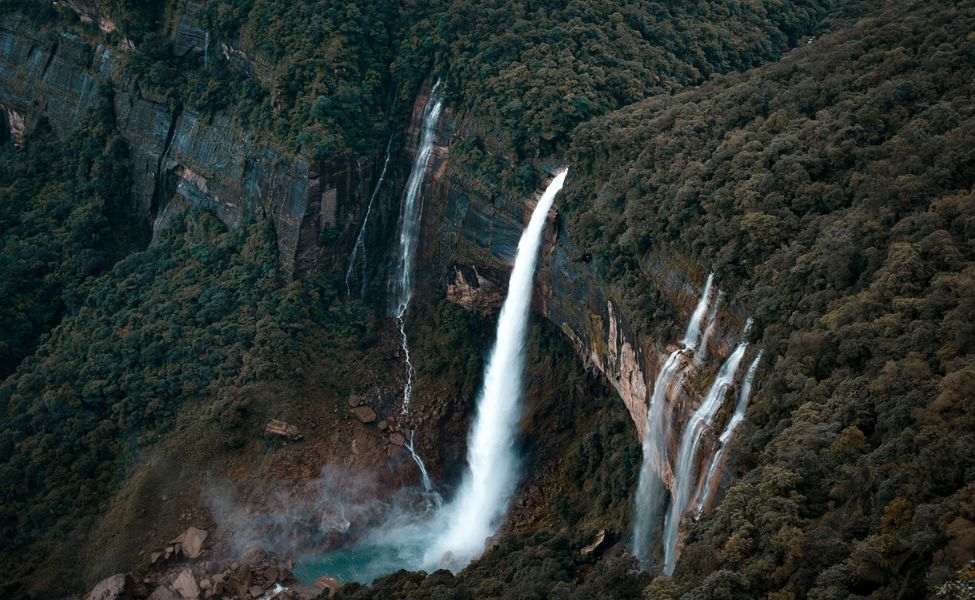
Nohkalikai Falls are one of the worth watching and visiting waterfalls in Cherrapunji, which is famed as the wettest region on earth. India’s tallest plunge waterfall is located there: the Nohkalikai Falls. Due to the fact that Nohkalikai Falls are rain-fed, you may experience their full beauty and power even from a distance during the monsoon season on a clear day. More often than not, Nohkalikai will appear in images when you search for Meghalaya on the internet. Being recognisable, the waterfall has come to represent everything that is Meghalaya to many people. Time between October till December and March till May, Nohkalikai Falls can be seen in all their splendour and beauty. But you may witness the waterfall at any time of the year. The force may be less in the dry months, but the waterfall is beautiful year-round. Nohkalikai is around 7 kilometres from Cherrapunji town; to get to the waterfall entry point, use a taxi. A minimum entry fee of INR 20 and an extra INR 20 for cameras are required. Plan your travel according to the sightseeing timings are 9 AM to 5 PM.
Phe Phe Falls
In Meghalaya’s West Jaintia Hills District, there is a waterfall called Phe Phe. It is around 20 kilometres away from Jowai and close to the village of Jarain. To get to the falls, you must first walk a little distance before hiking downhill. There is a short downhill trip that shouldn’t take more than ten minutes. If public transportation is a means you are thinking of choosing for travelling, then in that case come to Jowai first which is 60 kilometres away from Shillong. From the taxi stand in Shillong, you can acquire shared automobiles. The fall is really located on the route that links Jowai and Dawki, but Jowai is closer. So get to Jowai and then hop in a shared ride headed for Jarain. Campsite is clearly visible as it lies on the side of the road. From there, it’s a quick stroll or hike downward to the actual fall. It is a brief descent that shouldn’t take more than ten minutes. However, you’ll have to hike back up when you leave.
Nongjrong
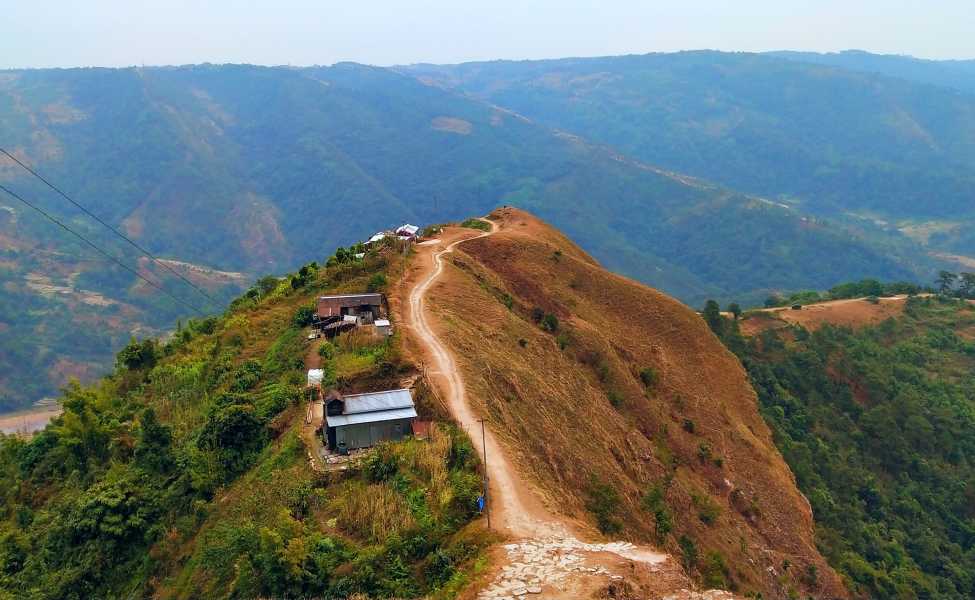
One of Meghalaya’s less travelled regions is Nongjrong, where visitors are infrequent. Undoubtedly, the breathtaking vista of the Nongjrong countryside will wow you. It is a dawn location when the Nongjrong Valley is clouded over just before daybreak. Nongjrong, a village in Meghalaya is a branch of the Mawkynrew Tehsil which is in East Khasi Hills district. The majority of the people that live in Nongjrong solely speak English, which is their native tongue. There are just 1440 people living there. It is around 30 kilometres from Mawkynrew, the sub-district headquarters, and about 60 km from Shillong, the district headquarters. The clouds will appear as a broad expanse of a white sea drifting endlessly over the lovely green hills and the valley as you look up from the base of the hilltop. It will be stunning to watch, especially at the horizon. Nonjrong’s natural beauty is so entrancing that it will lull you into a temporary state of forgetfulness while simultaneously reviving you. You won’t be let down if you make the journey to the hillock’s nook in order to see the clouds up close.
Seven Sister Falls
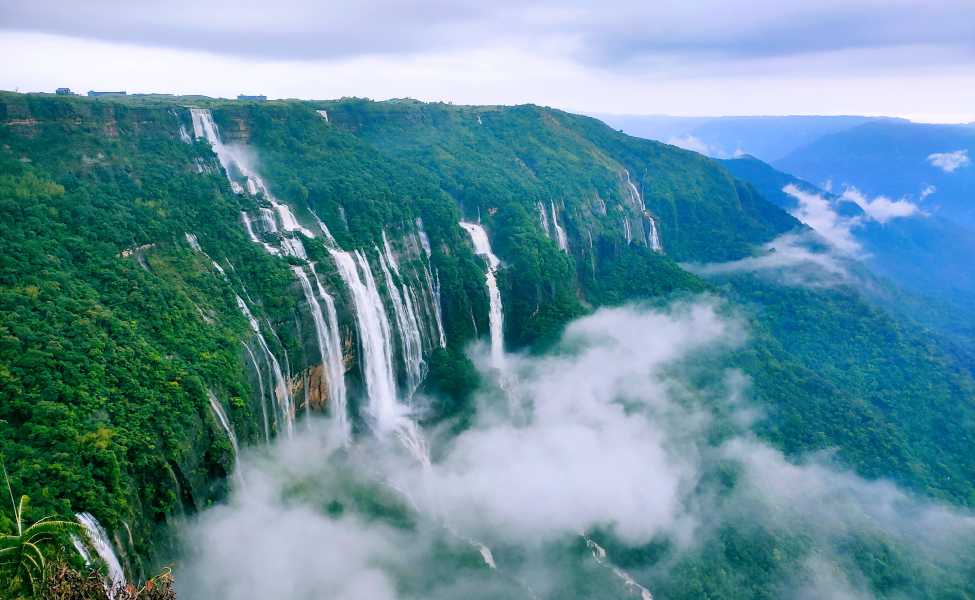
Nohsngithiang Falls, also known as Mawsmai Falls, is frequently referred to as the Seven Sisters Waterfalls due to its seven unique sections. This magnificent waterfall, located in Cherrapunji and the fourth highest in all of India, cascades down from limestone cliffs that rise 315 metres (1,033 feet) above the ground. One popular tourist destination in Meghalaya that draws a lot of visitors is the Seven Sisters Falls. The Seven Sisters Falls in Cherrapunji are the most well-known waterfalls, and during their busy season, they provide visitors a magnificent vista. The falls are made up of a number of smaller falls that combine to make a curtain of water that cascades precipitously from a cliff. The several falls go in different directions and take different shapes, resulting in an array of mixing waters that give the steep cliff a stunning appearance. The best time to see the Seven Sisters Falls is during the monsoon season, which lasts from June to September. Numerous tourist destinations, including the Mawsmai caverns and the Nohkalikai Falls, are close to the Seven Sisters Waterfalls.
Lady Hydari Park

Lady Hydari Park, one of Shillong’s most well-liked tourist attractions, is well-liked by both locals and visitors. Lady Hydari Park is a well-kept, verdant garden with a small zoo that spans more than a kilometre. Along with other animals like deer and serow, this zoo is home to about 140 species of reptiles, 73 kinds of birds, and various amphibians. The park in Shillong, which honours Lady Hydari, the province’s first lady, is a very famous tourist destination. This large park, which is in the centre of the city, contains a variety of plants as well as a small zoo that is home to 73 bird species and more than 100 reptiles. The park’s centrepiece is the lovely flower bed. In addition, Lady Hydari Park contains a museum and a play area for children with a variety of swings, including a sea-saw and slips. The museum showcases the diverse wildlife of the state through images of endangered species, elephant skulls, stuffed leopards, and other items. The park contains little ponds, willow trees, and rhododendrons.
Elephant Falls
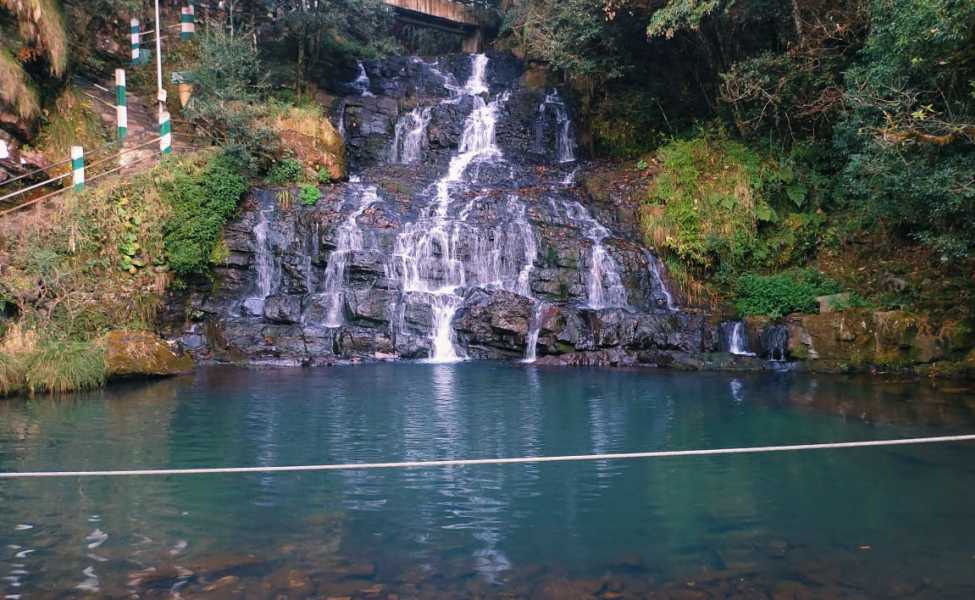
The elephant-shaped stone is at the foot of Elephant Falls, one of Meghalaya’s natural wonders. The best thing to do in Meghalaya is to visit this waterfall, one of the most well-known in the North East. Since the breathtaking Elephant Falls are made up of three majestic falls that follow one another, the indigenous Khasi people call them “Ka Kshaid Lai Patang Khohsiew,” which translates to “The Three Step Waterfalls.” The first waterfall, the biggest of the three, is hidden behind two enormous trees. The mountain stream that created the waterfall plunged over several levels and sliced through the forested mountainside. The railed walkways start at the top of the falls and go all the way to the bottom, allowing you to experience the thunderous roar of the flow as well as the close-up splendour of the falls. In the calm pool at the base of the falls, you may dip your knees into the crystal-clear water and take a picture with the enormous cascade in the background.
David Scott Trail

The David Scott Trail, so named in honour of the British administrator David Scott, is one of Meghalaya’s most well-worn hiking trails. From Mawphlang to Lad Mawphlang, the current David Scott Trail spans 16 km and is a lovely day trip. Starting in the charming village of Mawphlang, the trail winds its way through hills and valleys, occasionally climbing and dropping. It is a short hike that takes about four hours to complete. You encounter some absolutely beautiful scenery. Here, the stunning scenery of Meghalaya is clearly visible. The valleys, rolling green mountains, and glistening clear natural pools give the impression of being a part of Wonderland. Here, nature has seemed to be incredibly kind. The Umiam River and the Valley may be seen beautifully from the trek.
Mawkdok Dympep Valley

In the Meghalayan area of East Khasi Hills, the Mawkdok Dymper Valley, also called the Duwan Sing Syiem, is adjacent to the Cherrapunji region. The location is among the area’s most well-known attractions. A viewing platform has been built in this valley by the forest department so that visitors can enjoy and take in the natural beauty of the area. In order to get there, one must descend a set of stairs. The Mawkdok Dympep Valley, which reaches all the way up to Cherrapunji, is typically the first sight that tourists see when they arrive. The likelihood of seeing clearly is low because clouds typically block the view. The location is paradise-like and offers you amazing panoramic views.
Mawsynram

Mawsynram, the world’s wettest community, is a haven for nature lovers and the best place to witness how intense the rains can be. With a very slight advantage, Mawsynram matches Cherrapunji’s yearly rainfall of 11,872mm (11,777mm). Mawsynram, located 1400 metres above sea level in the East Khasi Hills, approximately 15 kilometres west of Cherrapunji. Meteorologists claim that the lovely position of this area is a big factor in Mawsynram’s extreme rainfall. Moisture accumulates over the Bay of Bengal, causing precipitation over Mawsynram and a lengthy, heavy monsoon season. Mawsynram’s residents utilise plants to block off the sound of rain on roofs as clouds frequently pass by residences in the area. Using one of the living bridges, or jingkieng deingjris, is a must-do activity. From rubber plant roots, these bridges are constructed. It is widely utilised by locals during the monsoon to cross choppy streams because it is claimed to take it about two decades to mature before it has strong support.One of the many pastimes that the inhabitants of Mawsynram engage in is the age-old tradition of “siat khnam,” which translates to “shoot arrow.” In this leisure archery-based gambling sport, each competitor fires arrows that resemble javelins at bamboo targets placed at close range. Fishing is one such activity that may be done in the ponds that surround the hamlet.
Mawsmai Falls
One of Meghalaya’s breathtaking waterfalls is the Mawsmai Falls. It is on the route to Cherrapunji and is very near to the Mawsmai village. Mawsmai Falls, also referred to as Nohsngithiang Falls locally, is well-known for being the fourth-highest waterfall in India, with a 315-metre drop. Because of the way it separates into seven smaller waterfalls as it tumbles down the perilous limestone cliffs, this fall is also known as the “Seven Sister Falls” in popular culture. The waterfall is a visual treat on a bright, sunny day as it reflects the sun’s beams and emits beautiful colours in all directions. However, even on an overcast day, you may actually watch little cloud patches move beneath your feet. Nevertheless, it’s still amazing to be able to watch little patches of cloud moving around the waterfalls and beneath your feet on gloomy days.
Dainthlen Falls

One of the most breathtaking sites you will see is Dainthlen, a raging waterfall that pierces through solid rocks and the tall Sohra plateau before tumbling into verdant woodlands. For the Khasi people, it is also an important location culturally. You can cross the rough, pot-holed river bed leading to the falls during the drier seasons. Folklore in the area claims that a significant conflict took place here. The Thlen was a gigantic serpent that represented evil and was finally slain by the locals of the long-gone village that is now Sohra. The Dainthlen Falls’ thunderous roar, the area’s broad terrain, the nearby hillocks, and the erratic winds that regularly blow here is a suitable location for a legend this big.
Dawki Tamabil

Dawki is the final Meghalayan village before Bangladeshi land begins, and Meghalaya and Bangladesh are separated by a 442 kilometre border. You can reach the Dawki-Tamabil border by continuing your driving along the Dawki River for another 15 minutes. Guwahati, Shillong, Dawki, Tamabil, Sylhet, and Dhaka are all connected by this route. One of India’s few soft borders, it is connected to both countries by road for commercial purposes, namely the transit of coal. The Dawki Tamabil border was uncomplicated and peaceful, with a few helpful police officers and a line of lorries waiting to obtain permission to cross across. When the river is calm and undisturbed, it is easiest to view the crystal pure waters that the internet advertises. After the monsoons is the ideal time for that. Probably from October to April. Rains have begun, and as the silt moves, the water becomes filthy. As a result, you see a brown river rather than a clean one.
Shillong Golf Course

The Shillong Golf Course is a golf course in Shillong, Meghalaya, 4 kilometres from the Shillong Bus Stand. The Shillong Golf Course is one of Shillong’s main attractions and one of the best golf courses in all of India.The golf course is situated in a lovely valley that is lined with rhododendron and pine trees and is also a haven for numerous bird species. Its lush surroundings and stunning views have earned it the moniker “Gleneagle of the East” from the United States Golf Association and Museum.The Shillong Golf Course has annual competitions when golfers from all over the nation gather to showcase their skills.It is also renowned for its lovely scenery.
Thangkharang Park
One of the top tourist destinations in the area is Thangkharang Park, which is 12 km from Cherrapunji. It is close to Khoh Ramhah Rock and provides you with a panoramic view of Bangladesh and the three-tiered Kynrem Falls that are far away. This location’s attractiveness is enhanced by the winding roadways. The State Forest Department Control is in charge of maintaining the park, which features a lovely fountain, a garden for little children, and a greenhouse with a variety of plants and trees. Getting to the other part of the park is made easier by a tiny bridge, which also provides a breathtaking view over the plains and the valley. The Khoh Ramhah rock and the surrounding park are best seen during the monsoon, when the valley is completely covered with lush vegetation.
Wei Sawdong Falls

It is one of Meghalaya’s most stunning waterfalls and has three levels. The waterfalls’ stunning view compels everyone to take pictures of them. To reach these falls, you must descend a short distance, but the incredibly breathtaking vista of the falls is well worth the effort. The waterfall is located in the East Khasi Hills district, some 60 kilometres southwest of Shillong, and is not far from Dainthlen Falls, another significant waterfall. The local Khasi language (wei, meaning resembling a pool, and sawdong, meaning square-shaped) gave rise to the name Wei Sawdong. Wei Sawdong is tough to reach, and the hike to the waterfall requires completing an out-and-back track. The water at the falls is particularly renowned for being bluish-green and transparent.
Umngot River

It appears as though the boat is gliding through the air as the River Umngot is so breathtakingly lovely and pristine. A riverbed that hangs in the sky is reflected in the river, which gives the impression of being a mirror. A state that is entirely blanketed in nature’s bounties, Meghalaya in Northeastern India is well known for its natural wonders. One of the cleanest rivers you will ever come across is the Umngot River, or Dawki River as it is more commonly known, which is located near the border town of Dawki. West Jaintia Hills is where it is situated.
Wahkaba Falls
Wah-kaba Falls, a seasonal waterfall in Cherrapunji, Meghalaya, approximately 7.5 kilometres away from the bus stop.The waterfall plunges into a gorge after tumbling hundreds of metres down a stony incline. Despite the clearness of the water pouring through the falls, it tastes awful. It is conveniently located next to the road, only requiring a short stroll to get to the perspective of the waterfall. Even the waterfall’s edge is accessible to visitors, where they can examine the safety barriers that have been put in place to guard against mishaps. It’s really windy everywhere, therefore one should exercise caution when standing above the waterfall. On the route to the Wah-kaba, a minor waterfall is also there. It is best to watch the falls during the wet season. The entire region is fed by rain, hence moisture is necessary for the falls’ splendour.
Moopun Waterfalls
The Moopun Waterfalls are located in Mutong Village along the Umjhai River. It is located 10 kilometres from the NH 44 intersection in Kongong and 25 kilometres from Jowai and Khliehriat, respectively. The distance to the top of Moopun Falls is only 300 metres from the PWD road. The guests will just need to walk 3 minutes to reach the Stone Bridge and 5 minutes to reach the base of the Moopun Falls from the car parking. According to legend, it is connected to the spectacular Umhang Lake, which is located near Bataw hamlet, 30 kilometres from the district headquarters. The “Kyllang Le Iaw” (Water Goddess) journeys from Umhang Lake to Moopun Falls, where she rested and had a bath for up to three days and three nights before continuing on her voyage. The Waterfalls is a picturesque location with a lush, green forest, an endangered pitcher plant, and a great picnic area nearby.
Krem Mawmluh
Krem Mawmluh is the longest cave and fourth in number in the Indian subcontinent, which is more than 7 kilometres in total in cave passages. Approximately 10 feet above sea level, the cave’s entrance. Inside Mawmluh Cave, there are well-known stalagmite formations as well as other rock formations. A pool that was created by five different rivers making their way within the cave can also be observed there. It took a lot of squeezing to enter due to the entryway’s extreme confinement. The cave has streams that flow through it during monsoon season, and certain areas of it are completely submerged. The cave is too deep, filled with tunnels, a wide variety of calcite formations, large caves, waist-deep pools, and a short distance of belly crawling. The drought wiped out numerous civilizations, including those in Mesopotamia and the Indus Valley, all across the planet.
Tyrshi Falls
Even more stunning than the Elephant Falls in Shillong is Tyrshi Falls, which is located close to Jowai. About 5 kilometres separate Jowai from this cascade. An expanse of lush paddy fields that opens out to the Tyrshi Falls rushing down to the Pynthor (paddy-fields) below are connected by a charming arch bridge. Your descent to the bottom of the falls, which cascade down like milk over a vertical drop, is made easier by a winding trail affording a beautiful and expansive perspective of the Pynthor Nein.
Mawsmai Cave
Of all the caverns in the vicinity, Mawsmai Cave is unquestionably the most enjoyable. Even while the tunnel is not the longest among the local caves—it is about 150 metres long—it most certainly offers a glimpse into underground life. In Meghalaya’s East Khasi Hills, just 6 km from Cherrapunjee’s centre, sits the magnificent Mawsmai Cave. There is no need for a guide to explore the Mawsmai caves, it is one of the only well-lit caves in Meghalaya. These stunning caves, which are adorned with stalactites and stalagmites, are the result of natural erosion and underground water. The entrance is wide, but as you move forward, it gets smaller. The cave is home to different types of flora and fauna. On your vacation to Cherrapunji, visit Mawsmai cave if you want to experience something other than lush vegetation and mountain peaks.
Butterfly Museum
One of Shillong’s most well-liked tourist destinations is the Butterfly Museum, sometimes referred to as the Entomological Museum. The museum is located on the Riatsamthiah Jaiaw, close to Christian Academy School, and it has a huge collection of beautiful butterflies, moths, beetles, and other insects. For economic interests, the museum also raises butterflies. Butterfly Museum in Shillong might be of interest to you if butterflies’ fluttering, vibrant wings have always captured your attention. One of Shillong’s most well-liked tourist destinations is the Entomological Museum, sometimes known as that name. The museum features many species of beetles, moths, spiders, and butterflies from all around the country. The privately held butterfly museum is a fantastic pleasure for children. This museum, which is owned and run by Wankhar, Riatsamthiah, appears to be very colourful and lovely. Here, initiatives for moth and butterfly conservation and preservation are also started. Additionally, butterflies are raised here for commercial purposes, assuring the preservation of the natural equilibrium. People of all ages would undoubtedly remember their visit to this museum.
Don Bosco Museum
The Don Bosco Museum is a 7-storey historical complex with 17 galleries that feature exhibits that walk visitors through Northeast India’s way of life. It is located in Shillong. Additionally, these galleries feature a varied assortment of artistic expressions, antiques, clothing styles, weapons, and laborious work that illustrates the cultures and way of life of the various tribes and individuals in Meghalaya.
Kharmih Varieties Spot
The headquarters of Kharmih Varieties Spot are located in Cherrapunji, Meghalaya 793108, India. Kharmih Varieties Spot is a company that works in the casino sector. The area is perfect for house stays and camping. It is renowned for having a picnic area with all the necessities. Definitely a nice place for a picnic with lovely surroundings.
Kynrem Falls
The East Khasi Hills district’s Kynrem Falls, which is 12 kilometres from Cherrapunjee and has three tiers and a vertical drop of 305 metres, is a waterfall. A short bridge allows vehicles and pedestrians to cross the cascade at the base of the falls, which is where the motorable road that leads all the way to Bangladesh passes. The fall divides into two distinct streams or rivulets, each of which gains speed as it descends the last leg of the third tier by merging with the other. Thangkharang Park serves as the genesis of this fall. The monsoon season is the greatest time to see this waterfall because it is the seventh highest in India and seasonal in nature.
Shillong Peak

In Shillong, Meghalaya, the Shillong Peak makes a great location for a picnic. A stunning aerial perspective of the city sprawled out against the picturesque hill slopes is available from this peak. Meghalaya’s Shillong Peak, which is 1956 metres high, is the state’s highest point. One of the most beautiful areas of the state, it is known for its lush tropical foliage and the huge chasms that drop off the road. Meghalaya, an Indian state in the country’s northeast, has Shillong as its capital. It is thought to be a well-liked vacation spot.
Rynjhi Falls
The stunning Rynji Falls, which is roaring and gorgeous, are in Cham Cham hamlet, about 3 kilometres south of Moopun Falls. Rynji Falls is the ideal location for hikers and environment lovers to experience the eco-trail. More of the Rynji Falls’ natural splendour is shown by the massive hard rock formation that surrounds it. Above the Rynji Falls, the “stepping natural ponds” have provided a special interest for outdoor enthusiasts and environment lovers. It is the ideal location for eco-tourist activities like fishing.The Rynji Falls is well connected with adequate footpaths and bridges built inside the jungle. This mesmerising waterfall is open to visitors and tourists all year round.
Nongkhyllem Wildlife Sanctuary
Nongkhyllem is a place where there used to be yearly community hunting, but thanks to the forest department’s wise intervention and the local villages’ thoughtful support, it is now a pristine sanctuary. “The forest will naturally regrow if left to its own devices. We must recognise it, the forest chief continued. The study concluded that there had been a significant reduction in biotic interference in the Nongkhyllem Wildlife Sanctuary and that zonation had taken place with deep and additional zones while also ensuring an eco-sensitive zone.
Thangsning Falls
The village of Thangsning is situated in Meghalaya, India’s Mawkynrew Tehsil in the East Khasi Hills district. It is located 30 kilometres from the district headquarters Shillong and 18 km from the sub-district headquarters Mawkynrew. There are tall, gorgeous waterfalls nearby that are extremely intriguing. Apart from locals, very few visitors come here.
The Eco Park
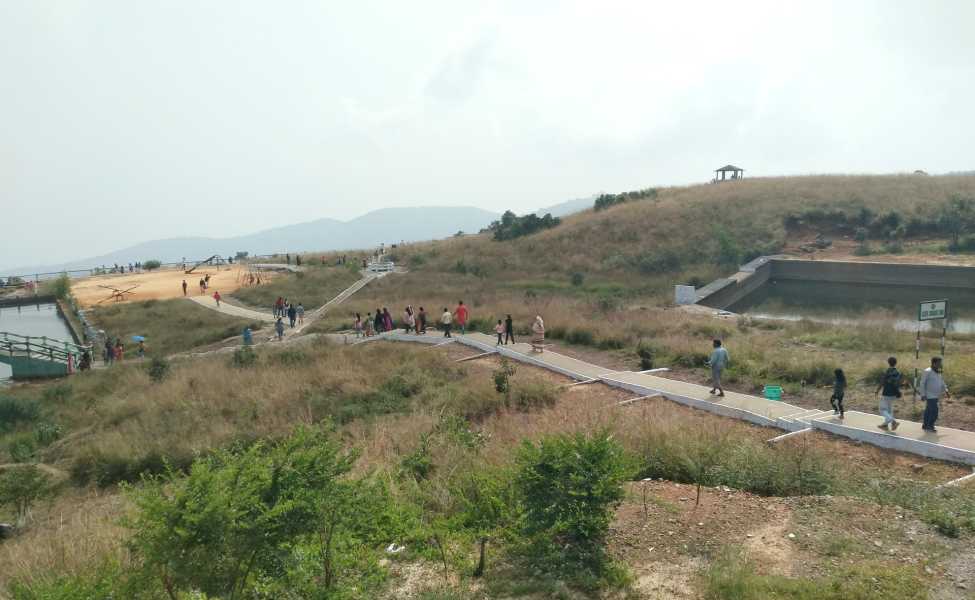
One of Cherrapunjee’s most well-liked tourist destinations is Eco Park, which the Government of Meghalaya created and maintains. From here, tourists may get a beautiful view of the neighbouring waterfalls and Cherapunji’s “Green Canyons.” A stream with crystal-clear water runs along the perimeter of the environmental park. To see the lovely views of the canyons, proceed past the crossing bridge and arrive at its terminus. The vistas are truly magnificent from here. Admire the breathtaking views of Bangladesh’s plains directly from the park’s other side. The Shillong Agri-Horticultural Society donated a wide variety of indigenous orchids to the park as well. These orchids are displayed at the park’s Green House. This unusual park was just recently constructed. This park, which is perched atop a plateau, provides lovely views of Bangladesh’s Sylhet Plains. The well-known Nohsngithiang Falls have their beginnings in the Eco Park’s southern section.
Air Force Museum
An excellent location for fans of aircraft and the air force, the museum is frequently filled with families with young children. This location is a must-visit if you want to know about the Air Defence Force of our nation or teach your children about it. Along with miniature rockets and aircraft, there are uniforms from the air force on exhibit. Both adults and children enjoy visiting Shillong’s Air Force Museum. It serves as a repository for information about the nation’s armed forces, especially the courageous flying warriors of the Indian Air Force.
In the Upper Shillong region, there is a museum. It contains images from both the Indo-Pakistan War and the Indo-China War. Due to the large number of images it includes, it is a must-see attraction in Shillong. The skin of a Python can be seen by visitors in the museum. The museum showcases a variety of items, including tiny models of aircraft, missiles, rockets, and the uniforms worn by air force pilots.
Borhill Falls

The Pangtumai Falls, also known as Borhill Falls, are adjacent to the Indian and Bangladeshi border town of Dawki. Its widespread quality attracts tourists. The waterfalls are referred to as pangtumai in Bangladesh. A wonderful town in the Sylhet region is Pangtumai. North East India is where it is organised. To begin with, you must travel to Shillong from any part of India. You may then take a reasonably priced taxi to the magnificent Borhill Falls from there. However, there is a transportation benefit from Shillong to Dawki, and then you can travel to Borhill Falls. Anywhere in Bangladesh, you must travel to the Tamabil neighbourhood of Sylhet. After intersection fringe, you can travel to Dawki.
Prut Falls
In Laitlyndop Village, the raging waters of Wah Urwan (Wah means river in Khasi), fall from a height of 40 m, creating this graceful sheath of white pouring over the cliffs. This waterfall is without a doubt among the nicest I’ve seen in Meghalaya. The first of many such waterfall encounters I’ve had this monsoon, this waterfall offers the unique option to view it from behind the fall.
Lyngksiar Falls
The 2.6-kilometer circular track in Meghalaya close to Shella Bholaganj. It usually takes 46 minutes to finish and is regarded as being simple. While exploring this trail, which is excellent for birdwatching, hiking, and strolling, you probably won’t see many other people. The most beautiful waterfalls are those ones. This magnificent work of mother nature is close to Cherapunji and is a popular location for picnics among both residents and visitors. This place is graced by waterfalls with multiple levels and crystal clear water. The short journey to these waterfalls is enjoyable and has lovely scenery and interesting spots. Visit this walk so you may enjoy these waterfalls’ beauty and surroundings.
Bishop Falls
Bishop Falls, a three-tiered waterfall with a height of 443 feet, is the twenty-second-highest waterfall in India. Along with it, Beadon Falls cascades down into a deep gorge of the Umiam River, which runs through the Suna valley. Both of these waterfalls are sometimes referred to as twin brothers. This fall is reached through a curvy route at Mawlai, which is situated on NH 40 at Mawprem. Families travelling together and residents alike like taking picnics near the magnificent Bishop waterfall. Bishop appears to be gushing more ferociously in comparison. At the base of this fall, there is also a hydroelectric powerhouse in operation. Bishop Fall is surrounded by massive granite outcrops and dense trees.
Police Bazar

Shopping therapy is popular at Police Bazar, the major market in Shillong. Along with a flea market where you might discover antiques, trash jewellery, excellent Meghalayan handicrafts, local goods, and other stuff, the Police Bazaar has a variety of restaurants, hotels, well-known merchants, as well as other establishments. It is among the top locations to experience Shillong tourism as well as one of the best places to shop in Shillong. Since it is a modern market with many hotels, stores, and restaurants, Police Bazar is a one-stop market for all types of tourists visiting Shillong.There are numerous retail and entertainment alternatives available. Along with the contemporary stores, there are a variety of traditional stores selling wonderful Meghalayan handicrafts. Given that it provides ample amenities for everyone, the market is regarded as being perfect for those looking for leisure activities, shoppers, and foodies. When making a purchase from a street seller, excellent negotiating abilities are required. This location is very accessible and is constantly crowded with people.
Ever Living Museum
Located in Mawshbuit Village in Shillong, the privately owned Ever Living Museum celebrates people’s love of history, culture, tradition, and the outdoors. The Garo, Khasi, and Jaintia Hills’ hill tribes are represented by artefacts in this ethnographic museum, which is divided into three sections. The main museum, which is constructed of concrete, contains both vintage and modern weapons used by the Meghalaya tribes. Additionally, there is the delightful opportunity to explore Meghalayan string and bamboo instruments as well as drums, gongs, pipes, bamboo and iron mouth organs, concertinas, and other musical instruments. There are also vintage pressure cookers, cast iron kettles, and pots for preparing curries. Ancient smoking pipes from the Garo, Khasi, and Jaintia tribes can also be found. Aside from small tree huts from the Garo tribe and bamboo huts from the Khasi tribe, the handicrafts section also includes miniature baskets, fish traps, and filters made of bamboo. The Khasi, Garo, and Rabha tribes’ vintage clothing and jewellery are also on display in the museum.

